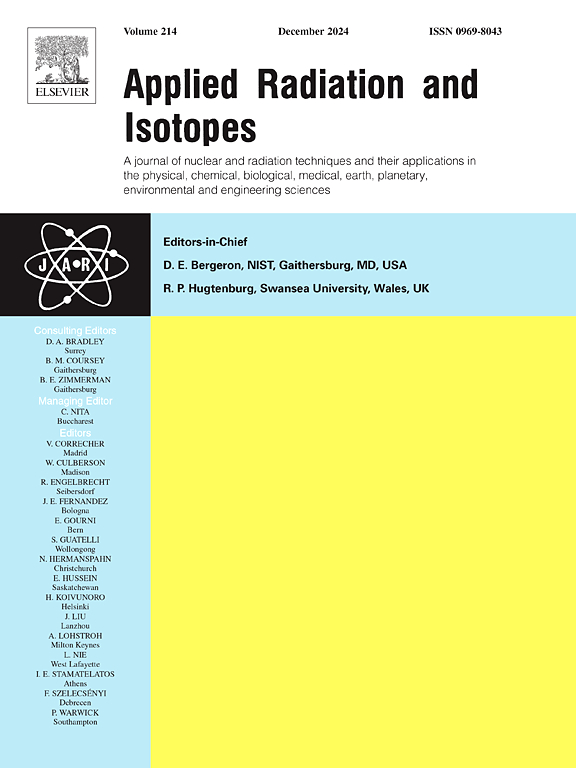Influence of B2O3 incorporation on the structural, mechanical and radiation shielding properties of TeO2 Based bioglasses
IF 1.6
3区 工程技术
Q3 CHEMISTRY, INORGANIC & NUCLEAR
引用次数: 0
Abstract
This study investigates the structural, mechanical, and radiation shielding properties of a series of novel bio glasses with the composition (55-x)TeO2-20Na2O-10CaO-15P2O5-xB2O3 (where x = 0, 3, 5, 10, and 20 mol%). The aim was to evaluate the effect of B2O3 addition on these properties. Empirical methods were used for calculating the mechanical and elastic properties. XRD analysis confirmed the amorphous nature of the glasses, while FTIR spectroscopy revealed the presence of characteristic functional groups associated with TeO2 and B2O3. The results indicate that B2O3 incorporation significantly reduces the glass density (from 4.24 g/cm3 to 3.18 g/cm3) and enhances molar volume (from 29.963 cm3/mol to 34.302 cm3/mol), leading to a less compact glass structure. The mechanical properties were also affected, with fracture toughness decreasing (from 1.367 MPa m1/2 to 1.280 MPa m1/2) and hardness increasing (from 3.091 GPa to 3.207 GPa). Regarding radiation shielding performance, the Linear Attenuation Coefficient (LAC) values decreased with increasing B2O3 content, indicating a deterioration in shielding effectiveness due to the lower effective atomic number of B2O3 compared to TeO2. These findings demonstrate that while B2O3 improves mechanical hardness and molar volume, it compromises radiation shielding properties by reducing glass density and attenuation capacity.
求助全文
约1分钟内获得全文
求助全文
来源期刊

Applied Radiation and Isotopes
工程技术-核科学技术
CiteScore
3.00
自引率
12.50%
发文量
406
审稿时长
13.5 months
期刊介绍:
Applied Radiation and Isotopes provides a high quality medium for the publication of substantial, original and scientific and technological papers on the development and peaceful application of nuclear, radiation and radionuclide techniques in chemistry, physics, biochemistry, biology, medicine, security, engineering and in the earth, planetary and environmental sciences, all including dosimetry. Nuclear techniques are defined in the broadest sense and both experimental and theoretical papers are welcome. They include the development and use of α- and β-particles, X-rays and γ-rays, neutrons and other nuclear particles and radiations from all sources, including radionuclides, synchrotron sources, cyclotrons and reactors and from the natural environment.
The journal aims to publish papers with significance to an international audience, containing substantial novelty and scientific impact. The Editors reserve the rights to reject, with or without external review, papers that do not meet these criteria.
Papers dealing with radiation processing, i.e., where radiation is used to bring about a biological, chemical or physical change in a material, should be directed to our sister journal Radiation Physics and Chemistry.
 求助内容:
求助内容: 应助结果提醒方式:
应助结果提醒方式:


